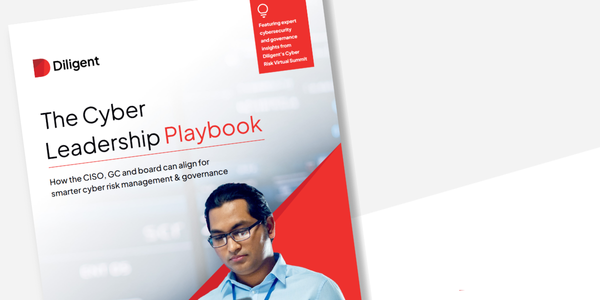FedRAMP 20x: What’s actually changing and why it matters

A new era for FedRAMP.
FedRAMP 20x is the first major update to the program in more than a decade. The goal isn’t to reinvent the wheel, but to modernize how compliance is demonstrated and maintained. Instead of relying on static paperwork and point-in-time evidence, 20x is shifting toward continuous validation and risk-based prioritization.
Right now, there are three areas generating the most attention:

Each one changes the way organizations prove and maintain compliance. Here’s what’s different, what it looks like in practice, and what the impact will be.
1. Key Security Indicators (KSIs)
What’s changing:
In the past, proving compliance meant submitting artifacts: screenshots, policies, and narrative descriptions. Under 20x, compliance will hinge on machine-readable metrics — Key Security Indicators — that provide real-time validation instead of static evidence.
Real-world example:
Previously, to show that multi-factor authentication (MFA) was in place, you might have uploaded a screenshot of your identity provider settings and a copy of your access policy. With KSIs, you’ll need to demonstrate through automated data feeds how many active accounts exist, how many have MFA enabled, and where exceptions remain.
Impact:
This doesn’t eliminate the need for policies or oversight, but it fundamentally changes how compliance is proven. Organizations must ensure their tools generate data at the right level of detail, and their GRC platforms can ingest and analyze that data in real time. Continuous monitoring becomes the baseline expectation.
2. Risk-Based Vulnerability Management (POA&Ms)
What’s changing:
Remediation timelines are no longer one-size-fits-all. Critical vulnerabilities will carry shorter deadlines, while other findings may be assigned more flexible windows depending on context and exploitability.
Real-world example:
A scanner flags 200 vulnerabilities. Under the old model, “highs” had to be closed in 30 days and “moderates” in 90 — regardless of where they sat or whether they were realistically exploitable. With 20x:
- An internet-facing flaw with a known exploit must be closed quickly.
- A high-severity issue buried behind two layers of authentication may have a longer remediation window.
Impact:
The total workload isn’t reduced. Every vulnerability still has to be addressed. What changes is that timelines are now tied to actual risk rather than scanner ratings alone. That allows teams to move faster on what matters most, while still relying on patch management and configuration management cycles to handle the full volume of issues. The challenge is proving — with evidence — that you are prioritizing effectively.
Get the Cyber Leadership Playbook
For actionable insights from industry experts on integrating AI into your cyber risk management and governance strategy, download the Cyber Leadership Playbook.
Yes, I'd like my free copy3. Significant Change Notifications (SCNs)
What’s changing:
SCNs are being reworked to bring more structure and predictability to how system changes are reported and reviewed. The goal is to reduce ambiguity while maintaining oversight.
Real-world example:
Today, adding a new system component or changing your authorization boundary often triggers lengthy back-and-forths with an agency sponsor. Under 20x, the SCN process will be standardized, with clearer definitions of what counts as “significant” and more consistent handling of reviews.
Impact:
This doesn’t remove scrutiny. Agencies will still want to understand how changes affect your security posture. But a more structured SCN process means fewer delays, less confusion, and a smoother path for organizations making necessary updates to their environments.
Why this matters for your organization
These three changes point to a bigger truth: FedRAMP 20x raises the operational bar. Organizations will need platforms that can:
- Aggregate data across dozens of tools
- Normalize it into evidence that maps to KSIs
- Provide analytics to show compliance in real time
- Support structured processes like SCNs without derailing operations
Not every GRC platform can handle that scale, and not every stack is ready to feed data at the depth required. That’s why early preparation — and the right partners — matter. The same urgency applies to defense contractors navigating the newly finalized CMMC rule; find out more in this blog post.
Why acting now matters
It’s tempting to wait until 20x is fully rolled out before making changes. But by then, the gap between prepared and unprepared organizations will be wide. Preparing now means:
- Assessing whether your tools expose the necessary data for KSIs.
- Reviewing your vulnerability management process against risk-based expectations.
- Piloting SCN processes to see how they’ll work in practice.
- Partnering with providers who already have FedRAMP authorization and experience navigating these requirements.
FedRAMP 20x timeline: Key milestones
FedRAMP 20x is rolling out in phases. Here’s a snapshot of the most important dates so far:
- March 2025: FedRAMP 20x officially announced by GSA
- August 15, 2025: Authorization Data Sharing Standard released
- August 29, 2025: Final FedRAMP 20x Low Authorization Standard published
- September 4, 2025: Continuous Vulnerability Management Standard introduced
- September 26, 2025: Key Security Indicators finalized for FedRAMP Moderate
- October 31, 2025: Continuous Validation Standard and updated POA&M guidance released
- November 15, 2025: Moderate-level pilot submissions open
- December 5, 2025: Final FedRAMP 20x Moderate Authorization Standard expected
- 2026: Rev5 balance improvements and phased adoption of 20x across Moderate and High authorizations
The FedRAMP 20x timeline is evolving, but the direction is clear: automation, continuous monitoring, and structured compliance are becoming the new standard.
Final thought
FedRAMP 20x doesn’t change the mission: protecting federal data in the cloud. What it changes is the method. By tying compliance to KSIs, risk-based remediation, and structured change management, the program is demanding evidence that security is real, continuous, and measurable. Organizations that start adapting now — with the right tools and partners — will be the ones ready to succeed in this new FedRAMP era.
FedRAMP 20x is raising the bar for cloud compliance. Find out how Diligent helps organizations stay ahead with real-time evidence, structured workflows, and FedRAMP-ready solutions here.
FedRAMP 20x FAQs
What is FedRAMP 20x?
FedRAMP 20x is the first major modernization of the Federal Risk and Authorization Management Program in over a decade. It introduces automation, real-time monitoring, and risk-based prioritization to streamline how cloud service providers (CSPs) achieve and maintain compliance.
What is the difference between FedRAMP and FedRAMP 20x?
Traditional FedRAMP relied on static documentation and point-in-time assessments. FedRAMP 20x shifts to continuous validation using Key Security Indicators (KSIs), automated evidence, and structured change management. The goal is faster authorizations, lower costs, and stronger security outcomes.
Why is FedRAMP being updated?
The legacy FedRAMP model was slow, expensive, and difficult to scale. FedRAMP 20x responds to years of feedback from agencies and CSPs, aiming to reduce friction, improve agility, and make compliance more accessible — especially for small and mid-sized providers.
What are the main goals of FedRAMP 20x?
- Accelerate cloud adoption across federal agencies
- Reduce the cost and complexity of authorization
- Improve security through automation and continuous monitoring
- Enable real-time visibility into compliance posture
- Standardize processes like SCNs and POA&Ms
Keep exploring

Diligent Unified GRC Platform Brochure FedRAMP DoD Authorized (FED)
Diligent_Unified GRC Platform Brochure FedRAMP DoD Authorized (FED)

CMMC is here: Why waiting is the biggest risk
CMMC is now mandatory for DoD contractors. Learn why delaying compliance is the biggest risk, how it impacts contracts, and the benefits of early certification.

NIST AI Risk Management Framework: A simple guide to smarter AI governance
Explore NIST AI Risk Management Framework: key features, industry impact, pros/cons, regulatory role, and how tech helps secure your AI future.

Why CMMC exists: Security is only as strong as your weakest link
Understand CMMC's role in securing the defense supply chain. Protect sensitive data, avoid weak links, and maintain contracts.
